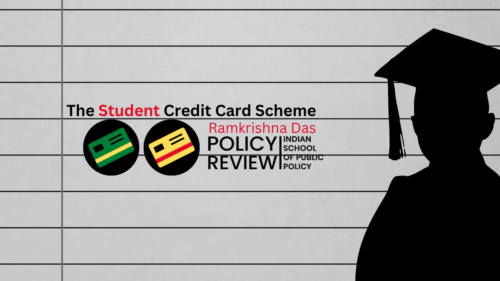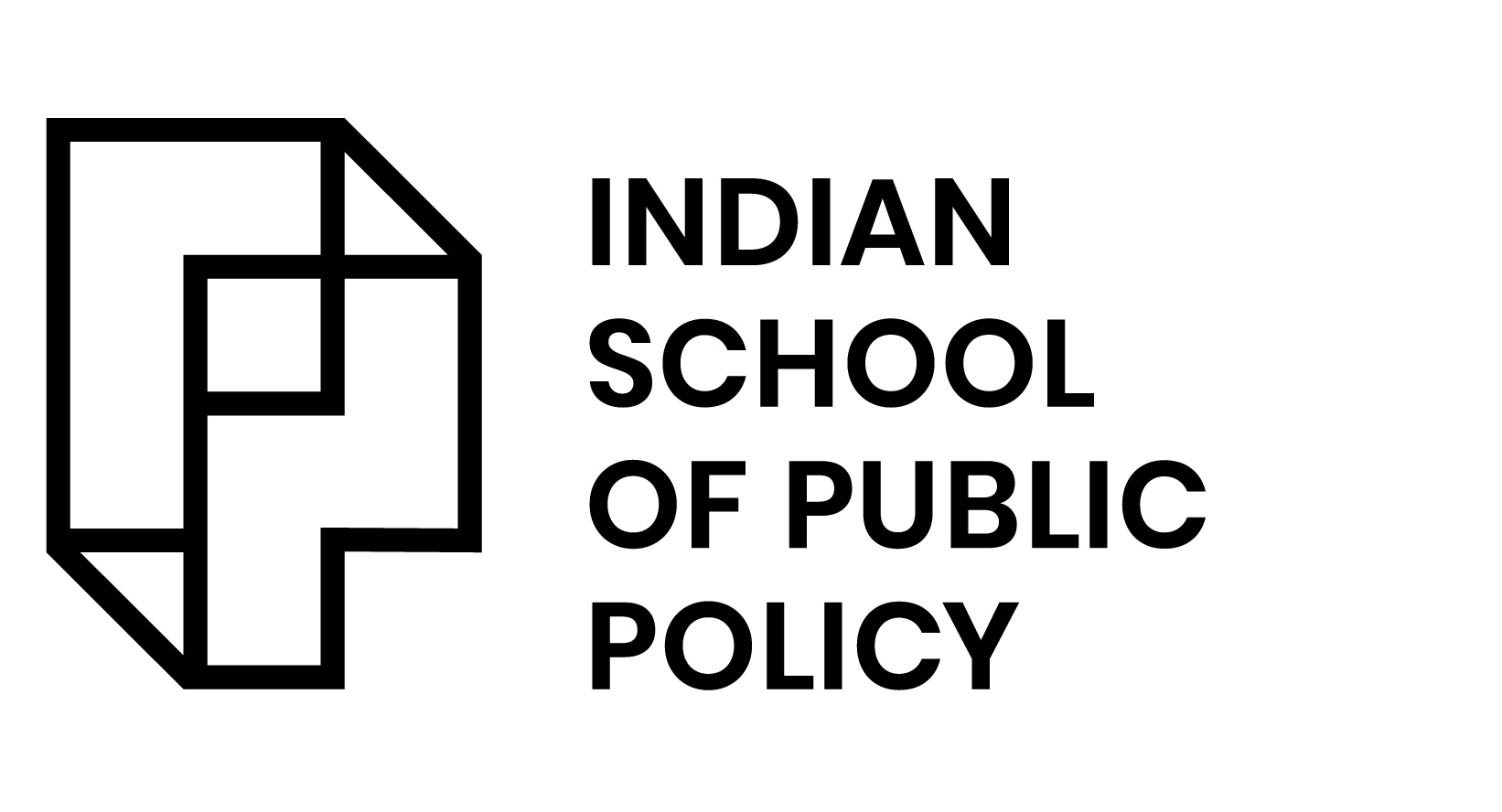
The Student Credit Card Scheme

In the last two decades, West Bengal has undergone several transitions regarding economic reform. As a result, the demand for public funds in priority sectors such as health, infrastructure, and defence has increased unexpectedly. Further, the rate of return on investment in primary and secondary education is much higher than in higher education investment. Meanwhile, West Bengal is gradually moving toward an increase in educational institutions to cater to the growing number of students enrolling every year resulting in the massification of higher education. The state has been experiencing tremendous growth in enrolment in higher education for the last two decades. Thus, the West Bengal government needs more resources to meet the demand for higher education for both “quantity” and “quality” expansion in higher education. It creates a force on the West Bengal government to find an alternative method for financing education.
Financing higher education with help of the credit market is not new in India. Student loans have been there since independence. Student loan is one of the most attractive alternative methods for financing higher education among credit constraint students. These pay-later system advocates for shifting the burden of investment in higher education from the student’s parent to the student, as a result, it enhances the internal “efficiency” of higher studies. But the credit market for higher education is involved with uncertainty at different stages, like becoming a successful graduate, and the repayment of the loan that depends on future earnings. Banks only provide loans based either on the capability and credibility of the borrower or the employability of the course. Because of such commercial bank policies, a poor, talented student is unable to access higher education and that contradicts the main objective of student loans.
So, to address this credit market failure and provide adequate funds to students irrespective of their financial condition, government intervention has become necessary. To do that, West Bengal has landed up with this scheme called “The student credit card scheme”
The student credit card scheme
Almost every student wants to pursue higher studies. But because of financial constraints, poor students are not able to fulfil their dream of obtaining a degree in higher education. “The main emphasis of this scheme is that students are provided with an opportunity to pursue higher education, with financial support from the banking system, with reasonable and affordable terms and conditions”. Through this scheme, the student can borrow money from the bank without collateral. the West Bengal government will enter into an agreement with the bank separately regarding their collateral.
The main objective of this scheme is to provide financial assistance, irrespective of the student’s family background., The West Bengal government will provide credit cards with a maximum limit of 10 lakhs at a simple nominal interest rate of 4% so that the student can get the funds to be needed for their study.
The Credit Card may be used to get a loan to meet up the following expenses [2]: –
- Course fees of Institutes, and professional courses in national institutions. Various competitive coaching institutes are meant for different competitive examinations like Engineering/Medical/Law, IAS, IPS, WBCS, SSC, etc.
- Accommodation charge in school, college, university, Institution hostel or rent for living outside the hostel.
- Cost of stationery and any kind of expenses that are required to complete the course, such as study tours, “project works”, “thesis”, etc.
- Up to 30% of the total loan sanctioned for non-institutional expenses for the whole course of study.
To ensure the smooth and proper implementation of this scheme, the higher education department and the school education department will set up a committee. This committee will ensure that all students who reside in West Bengal for at least 10 years and pursue education from class 10 onwards are getting benefits from this scheme.
Driving forces behind the scheme
The decline in investment in higher education in the last two decades:
Higher education plays an imperative role in social, economic, and scientific development. There is strong empirical and theoretical evidence that government expenditure on higher education has a significant effect on economic growth [3], and social development. India has experienced extraordinary development in higher education. The state of West Bengal has had a great legacy of higher education. But in the last two decades, the higher education of West Bengal has not performed well as compared to the national average.
It cannot be denied that the public expenditure on education in West Bengal has been improving since 2000. However, from the real price point of view, the growth has not been impressive. In the nominal term, the total expenditure on higher education has increased from 526.27 crores in 2000-01 to 2487.02 crores in 2013-14 (Table 1).
Table 1
| Total Budget Exp(BE) for Higher education | % BE of higher education concerning B.E on Education | % of BE on education concerning the state budget | % of BE on higher education concerning NSDP | |
|---|---|---|---|---|
| 2000-01 | 526.27 | 14.21 | 15.13 | 0.408 |
| 2001-02 | 604.87 | 13.94 | 14.84 | 0.419 |
| 2002-03 | 677.26 | 14.20 | 15.42 | 0.440 |
| 2003-04 | 665.15 | 13.88 | 13.56 | 0.384 |
| 2004-05 | 663.73 | 13.43 | 12.83 | 0.349 |
| 2005-06 | 721.95 | 12.90 | 14.81 | 0.344 |
| 2006-07 | 801.64 | 11.94 | 15.92 | 0.336 |
| 2007-08 | 836.39 | 12.16 | 14.99 | 0.306 |
| 2008-09 | 986.95 | 12.28 | 15.6 | 0.318 |
| 2009-10 | 1733.84 | 14.01 | 17.09 | 0.469 |
| 2010-11 | 1943.76 | 14.01 | 17.94 | 0.449 |
| 2011-12 | 1996.03 | 12.92 | 19.08 | 0.416 |
| 2012-13 | 2479.3 | 13.33 | 20.21 | 0.445 |
| 2013-14 | 2487.02 | 12.05 | 20.39 | 0.391 |
Sources: Department of Higher Education, Government of West Bengal
As per the financial allocation to higher education, the last 10 years are not showing any impressive improvement. It can be noticed in figure 1 that the expenditure on higher education has not been considered an important factor. Elementary and Secondary education has gotten the highest priority. But the government has to understand that higher education plays a crucial role in setting the academic standard for primary and secondary education. Higher education is not only responsible for providing highly skilled human capital, but also for research and development, and providing good policymakers.
Figure 1
| 2004-05 | 2005-06 | 2006-07 | 2007-08 | 2008-09 | 2009-10 | 2010-11 | 2011-12 | 2012-13 | 2013-14 | |
|---|---|---|---|---|---|---|---|---|---|---|
| Elementary | 37.7 | 39 | 37.2 | 39.3 | 36.2 | 33.4 | 35.7 | 38.3 | 38.3 | 38.8 |
| Secondary | 48.2 | 45.2 | 46.7 | 45.5 | 47.6 | 50.7 | 48.4 | 45.3 | 45.1 | 46 |
| Higher education | 12.7 | 14.3 | 14.6 | 14.1 | 14.3 | 14.4 | 14.3 | 14.2 | 15.1 | 13.7 |
Sources: Department of Higher Education, Government of West Bengal
Therefore, the West Bengal government has not been able to ramp up public expenditure in higher education as a percentage of NSDP. At the same time, the cost of higher education has increased, which draws the attention of the government to focus on alternative credit supply for financing expenditure on higher education.
Expanding private institutions
India has experienced a colossal amount of growth in private education since the beginning of the 1990s. This growth has been unexpected; in fact, before 1990 there were very few private institutions. West Bengal is not an exception. In the last decade, West Bengal has experienced a tremendous growth rate in private (aided & unaided) institutions, even more than in Government institutions (Table 2). There are three categories of institutes based on funding – (a) Public institutes set up and fully funded by the government; (b) Private-aided institutes overseen by private managements that receive funding from the state exchequer; (c) Private unaided institutes managed privately, that do not receive any funds from the government. This private sector is predominantly expanding among professional courses like engineering, management, and medicine, among others, because “the government and government-aided institutions have been unable to meet the rapidly growing demand for the higher education courses” [4]. However, the cost of higher education in such institutes is very high.
So, it can be argued that to safeguard poor students from bearing the cost of higher education- both tuition fees and maintenance costs—the West Bengal government is trying to look out for some alternative methods of financing. Among the different alternatives, the student loan has been advocated as a promising alternative method. It also promises the improvement of inequity in higher education as it reduces the adverse effect of public financing of higher education [5] and also increases the internal efficiency of higher education because the student would become cost-conscious.
Table 2
| 2010-11 | 2011-12 | 2012-13 | 2013-14 | 2014-15 | 2015-16 | 2016-17 | 2017-18 | 2018-19 | |
|---|---|---|---|---|---|---|---|---|---|
| Institution | |||||||||
| Government | 148 | 372 | 383 | 406 | 427 | 447 | 473 | 489 | 494 |
| Private Aided | 86 | 194 | 197 | 206 | 212 | 221 | 222 | 249 | 249 |
| Private unaided | 134 | 283 | 331 | 362 | 397 | 411 | 511 | 603 | 627 |
| Total | 368 | 849 | 911 | 974 | 1036 | 1079 | 1206 | 1341 | 1370 |
| Enrolment | |||||||||
| Government | 32153 | 718370 | 844137 | 926315 | 979407 | 978503 | 1021831 | 973953 | 983653 |
| Private Aided | 21170 | 403067 | 388370 | 382823 | 390005 | 412303 | 394103 | 379595 | 372804 |
| Private unaided | 75757 | 121058 | 132566 | 138854 | 138260 | 149257 | 182267 | 215043 | 246728 |
| Total | 609140 | 1242495 | 1365073 | 144792 | 150762 | 154003 | 1598201 | 1568591 | 1603185 |
| % of college | |||||||||
| Private(unaid+aid) | 59.78 | 56.18 | 57.96 | 58.32 | 58.78 | 58.57 | 60.78 | 63.53 | 63.94 |
| Government | 40.22 | 43.82 | 42.04 | 41.68 | 41.22 | 41.43 | 39.22 | 36.47 | 36.06 |
Sources: AISHE (Various Year)
Huge demand for higher education
Young India has a huge potential to export a skilled workforce. West Bengal ranked fourth among the Indian states in terms of population. The GER in higher education for the 17-23 age group has increased from 12.4% in 2010- 11 to 19.3% by 2018-19 (Figure 2). However, very less than the national average Gross Enrolment Ratio (GER). West Bengal is gradually moving toward as a result, West Bengal has been experiencing tremendous growth in enrolment in higher education for the last two decades. Thus, the West Bengal government needs more resources to meet the demand for higher education for both “quantity” and “quality” expansion in higher education.
Expected problems
Many uncertainties are involved with this scheme, from both the lenders’ and borrowers’ perspectives. In the future, this scheme may face several problems. A few of them are listed below-
- The students are not aware of their capacities for higher education discipline of their choice, particularly those from unprivileged backgrounds, like SC/ST, rural students, may not have adequate access to information concerning graduate incomes and future demand, due to lack of contact with graduates. So, the repayment burden can affect them more as compared to privileged students.
- The Indian education system is not able to provide the requisite quality for the job market. Even graduate students do not have proper information regarding their prospective jobs. As a result, the unemployment rate is high among graduate students, with a share of 16.3% in 2019[6]. It means that graduating does not ensure employment, but the repayment is mandatory. This can badly affect underprivileged students, including women who voluntarily and involuntarily participate in the labour market, in the form of their future consumption choices.
- “MSMEs are considered to be the backbone of any developing country”, including India, and it not only plays an imperative role in creating large employment opportunities at a lower capital cost but also helps in reducing regional imbalance by industrializing rural India and assuring inclusiveness across the nation. West Bengal has always been a top performer in MSME [7]. But for the formation of a small business, individuals heavily depend on personal debt. The personal debt incurred in early life in the form of student credit cards can reduce debt capacity in the future. So, it can hurt MSME growth in the future [8].
- The repayment of student loans never shows encouraging results, neither in the international context nor in the Indian context. Since the government would be the collateral, the borrower may not treat this loan as other loans like personal loans.
Register your Interest to Study at ISPP
Conclusion
On the one hand, public funds for higher education are continuously declining, and on the other hand, the massification of higher education needs more resources, so the decline in the share of public funding in higher education has forced the government to explore alternative ways of financing higher education.
The student credit card scheme may solve several existing obstacles related to the credit market of higher education, like eligibility on the basis of the student’s parent’s wealth, courses, and institutes, among others. It would increase internal efficiency by making the students more cost-conscious, and at the same time have adverse effects.
Therefore, unless this scheme is accompanied by carefully formulated policies regarding the monitoring system, the college fees repayment method might have a worse effect on the fiscal deficit.
References
- J. B. G. Tilak, “Rates of return to education and income distribution,” De Economist, vol. 137, no. 4. pp. 454–465, 1989, doi: 10.1007/BF01705975.
- T. Kolkata, “The Kolkata,” vol. 2, no. 1, pp. 1–12, 2011.
- A. Chandra and J. M. Islamia, “Does Government Expenditure on Education Promote Economic Growth? An Econometric Analysis,” MPRA Pap. No. 25480, no. 25480, 2010, [Online].
- P. G. Rani, “Financing Higher Education and Education Loans in India: Trends and Troubles,” J. Soc. Sci., vol. 12, no. 4, pp. 182–200, 2016, doi: 10.3844/jssp.2016.182.200.
- J. B. G. Tilak, “Student loans in financing higher education in India,” High. Educ., vol. 23, no. 4, pp. 389–404, 1992, doi: 10.1007/BF00138626.
- “• India – unemployment rate by education level 2019 | Statista.”,
https://www.statista.com/statistics/1001039/india-unemployment-rate-by-education-level/ - Ministry of MSME, “Annual Report 2020-2021,” Gov. India, Minist. Micro, Small Medium. Enterp., p. 156, 2021, [Online].
- W. Ambrose, L. R. Cordell, and S. Ma, “The Impact of Student Loan Debt on Small Business Formation,” SSRN Electron. J., no. 15, 2015, doi: https://www.researchgate.net/publication/315484005_The_Impact_of_Student_Loan_Debt_on_Small_Business_Formation

